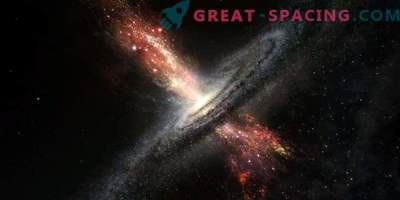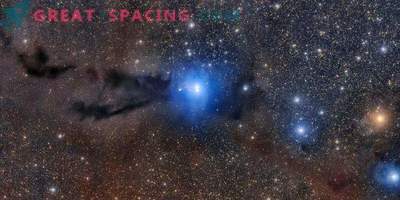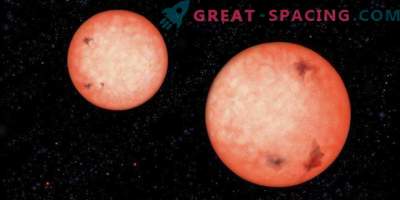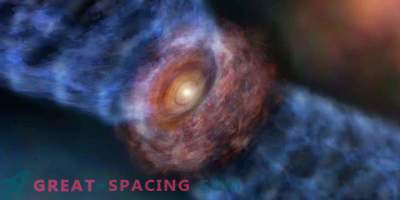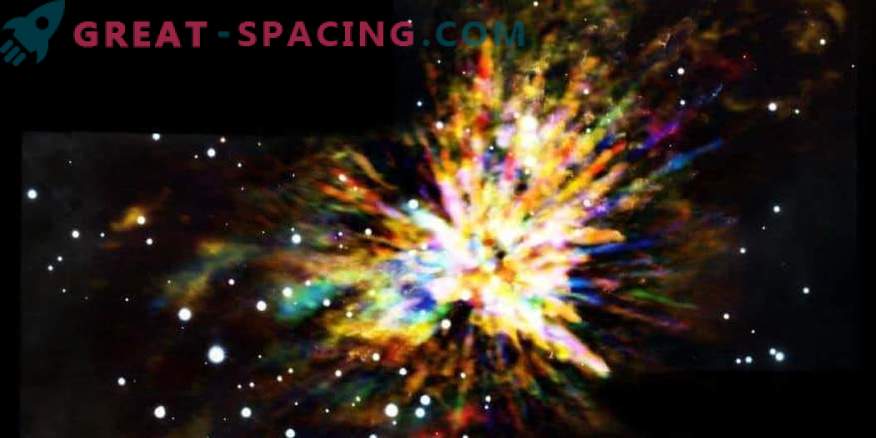
Composite snapshot of the OMC-1 cloud in Orion. You see the explosive nature of stellar birth. Here there are several young stars, thrown out 500 years ago.
About 500 years ago, two protostars decided to meet and produce a powerful explosion. Using the Atakamsky large millimeter-range grille (ALMA), scientists tracked the scattered fragments of this event. Thanks to this, one can get an idea of the cruel relationship of companion stars.
About 100,000 years ago, several protostars from the Orion cloud (1.5 thousand years distant from us) grappled with gravity and began to gradually converge. In the end, they collided, creating a powerful eruption that launched the remaining protostars and a huge amount of saw and gas into interstellar space at a speed of 150 km / s. At the same time, such a colossal amount of energy was released, equal to that reproduced by the Sun over 10 million years. The remnants of this action can now be observed from Earth.
Stellar groups (as in Orion) appear when a dusty and gas cloud, surpassing the Sun by a mass of hundreds of times, begins to crumble due to the influence of its own gravity. Protostars form in the densest regions and begin their chaotic movement. Over time, they “calm down” and submit to the gravity of the largest protostar. If the stars are located too quickly, then instead of settling in the galaxy, they will start the process of active interaction. Such explosions will not last forever, and the remains are visible for centuries.
However, John Bally of the University of Colorado says that protostar explosions can be common, as they help regulate the rates of star formation in large-scale molecular clouds.
Hints of the explosive nature of this event appeared back in 2009 while observing the Submillimeter Array in Hawaii. But ALMA reveals new details on the distribution and high velocity of carbon monoxide (CO) gas. This helps scientists measure the force of an explosion and understand how it affects star formation.
“Very often, people compare star explosions with ancient stars. For example, the death of a supernova due to the influence of a massive star or the eruption of a new one on a collapsing surface, ”says Bally. - “But now we are considering a new amazing stage - the stellar birth.”
